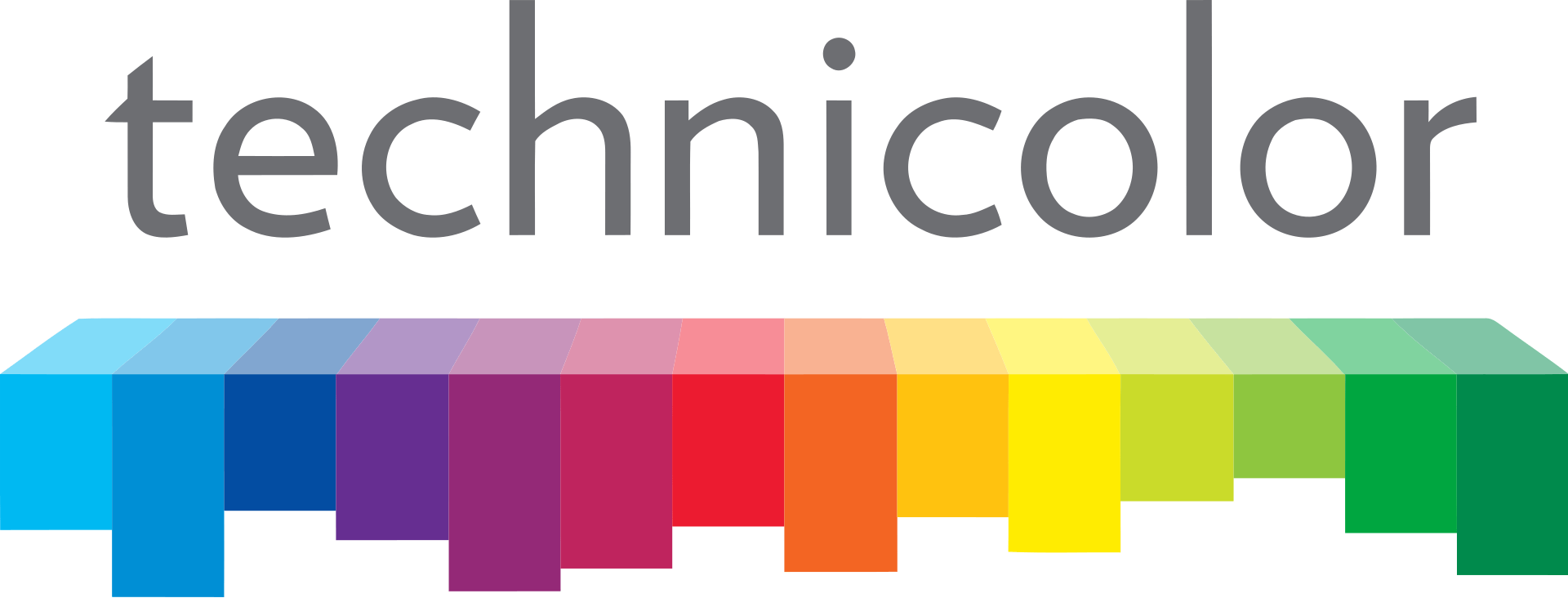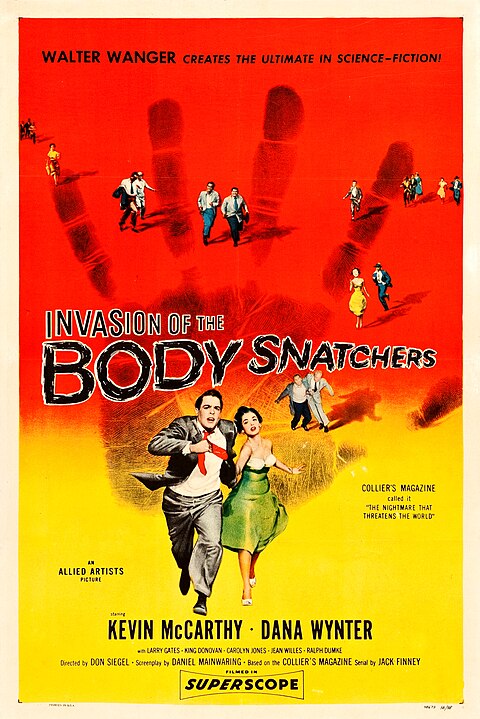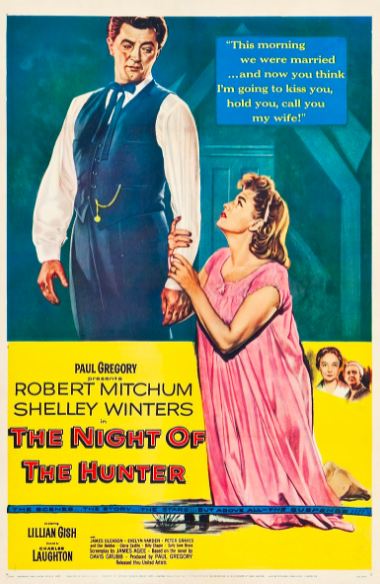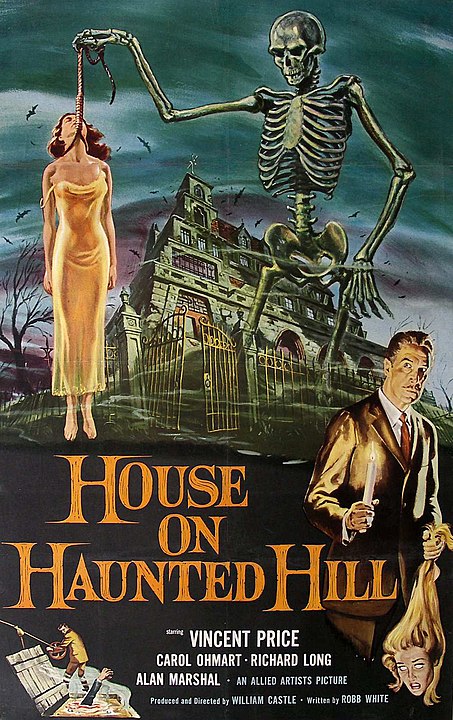You’re about to step into an era where cinema took a dark turn, mesmerizing audiences with chills and thrills like never before. The 1950s weren’t just about poodle skirts and rock ‘n roll; they marked the dawn of horror as a cornerstone of film, introducing you to nightmares that leapt off the screen and into the collective psyche. With legends like Hitchcock at the helm and monsters that became cultural icons, this period wasn’t just innovative—it was transformative. As you explore the shadows of 1950s horror, you’ll uncover how these films mirrored societal fears and why their legacy continues to haunt the silver screen today. Stay tuned, because you’re on the brink of discovering why this era remains a golden age for horror enthusiasts.
Key Takeaways
- The 1950s introduced iconic horror subgenres, including science fiction horror and the resurgence of Gothic influences.
- Technological advances like Technicolor and 3-D technology significantly enhanced the visual and auditory experience of horror films.
- Films of the era reflected societal fears, such as Cold War paranoia and nuclear dread, through themes of invasion and mutation.
- Directors like Alfred Hitchcock and William Friedkin pioneered psychological horror, setting a high standard for storytelling and suspense.
- The decade saw the introduction of legendary monsters and icons, including Godzilla and Vincent Price, shaping the horror genre for future generations.
The 1950s Horror Boom
In the 1950s, the horror genre exploded onto the scene with groundbreaking films like ‘House of Wax’ and ‘Them!’, mesmerizing audiences worldwide. This era wasn’t just about the chills and thrills; it marked a golden age for horror, introducing a variety of subgenres that captivated fans. Among the notable contributions was ‘House on Haunted Hill’, a film that saw Vincent Price deliver one of his most iconic performances. His portrayal in this atmospheric masterpiece solidified Price’s status as a horror legend, making the movie a must-watch for enthusiasts.
The decade also saw the birth of science fiction horror, blending extraterrestrial fears with traditional horror elements to create something entirely new and utterly gripping. This innovative fusion broadened the genre’s appeal, attracting audiences who might not have previously considered themselves horror fans. You’ve got films like ‘The Fly’ and ‘The Thing’ offering a fresh take on the terror that could come from beyond our understanding, mixing scientific curiosity with the spine-tingling fear of the unknown.
The 1950s horror boom wasn’t just a period of great films; it was a revolution that reshaped cinema, leaving a legacy that filmmakers still draw on today.
Influential Films and Icons
You’ll discover that certain films and performances from the 1950s horror genre have left an indelible mark on cinematic history. Vincent Price, with his unparalleled eerie charm, became a legend through his role in ‘House on Haunted Hill’ in 1959, a film that’s as atmospheric as it is spooky. This movie, alongside ‘House of Wax,’ showcased Price’s ability to captivate and terrify audiences, solidifying his status as a horror icon.
Christopher Lee’s portrayal in ‘Horror of Dracula’ in 1958 brought a new level of charisma and menace to the legendary vampire, making the film a cornerstone of horror cinema. Lee’s performance is still celebrated for its intensity and sophistication.
‘Creature From the Black Lagoon’ in 1954 offered a different kind of thrill with its atmospheric creature feature vibe. Starring Richard Carlson and Julie Adams, it introduced audiences to an iconic monster that has captivated the imagination of horror fans for generations.
These films, along with the introduction of other iconic monsters like Godzilla and Them!, not only thrilled audiences but also set a high bar for horror cinema, influencing countless films and filmmakers in the decades that followed.
Technological Advances
Horror films of the 1950s leaped forward with technological advances, including Technicolor and widescreen formats, that transformed the viewing experience. Suddenly, you weren’t just watching a horror film; you were immersed in it. The vibrant colors of Technicolor made the blood look realer than ever, and widescreen formats expanded your field of view, enveloping you in the eerie environments.
Sound technology also saw significant improvements. Stereophonic sound added depth to the screams and whispers, making them eerily lifelike. Special effects advancements meant monsters and creatures were not just figures in the dark; they were terrifyingly realistic entities that could send chills down your spine.
New camera techniques and lighting setups introduced a heightened sense of atmosphere and tension. The shadows were darker, the light was more ominous, and the angles more unsettling.
| Technological Advance | Impact on Horror Cinema |
|---|---|
| Technicolor | Enhanced visual immersion |
| Widescreen Formats | Expanded visual field |
| Special Effects | Realistic creatures |
| Sound Improvements | Lifelike audio experience |
These innovations weren’t just changes; they were revolutions that redefined what it meant to experience horror. With every technological stride, the genre pushed the boundaries of fear and immersion, inviting you to not just watch, but to be part of the nightmare.
Societal Fears Reflected
Amid the shadows of the 1950s, horror films captured and magnified the era’s deepest societal fears, from nuclear dread to the chill of Cold War paranoia. You were thrust into a world where the aftermath of World War II lingered, birthing a unique canvas for storytellers. The Cold War, nuclear paranoia, and the Red Scare weren’t just headlines; they became the lifeblood of 1950s horror cinema.
Themes of invasion, mutation, and a pervasive fear of the unknown weren’t just plot devices—they mirrored your anxieties about the atomic age, science, and technology. The era’s horror films didn’t shy away from exploring these fears. Instead, they probed deeply, presenting stories where monsters and aliens stood in for the era’s real-world terrors.
Cold War tensions and McCarthyism sparked a unique kind of storytelling, where themes of paranoia, conformity, and distrust wove through narratives, reflecting your fears back at you. The 1950s horror genre became a mirror to society, using monsters, aliens, and supernatural elements to explore and confront the anxieties of the time. It wasn’t just entertainment; it was a reflection of the collective psyche, engaging with the fears of an era on the brink of monumental change.
Genre Evolution and Trends
As you explore the 1950s horror cinema, you’ll notice the gothic influences making a grand comeback, adding a rich layer to the genre’s evolution. Technological innovations of the time breathed life into horror’s visual and auditory experiences, making films more immersive. Moreover, the emergence of psychological horror challenged viewers’ perceptions, pushing the boundaries of fear and suspense.
Gothic Influences Resurface
Exploring the shadows of the mind, the 1950s horror cinema witnessed a powerful resurgence of Gothic influences, melding time-honored themes with the era’s storytelling innovations. This period saw horror films deeply exploring psychological elements and societal anxieties, adding a rich depth to the genre. Gothic literature and folklore, with their eerie and atmospheric qualities, continued to inspire filmmakers, infusing movies with a sense of the uncanny. Horror in the 1950s balanced classic horror tropes with emerging trends, setting the stage for future innovations. This blend of Gothic influences and 1950s horror, enriched with psychological elements, marked a pivotal moment in cinema, gripping audiences with tales that resonated with the era’s collective consciousness and fears.
Technological Innovations Impact
Building on the rich tapestry of Gothic influences, the 1950s horror cinema also experienced a significant boost from technological innovations, reshaping the genre’s evolution and setting new trends. You’ve seen how 3-D horror in ‘House of Wax’ pulled audiences deeper into the story, while advances in special effects technology birthed menacing creatures in ‘Godzilla’ and ‘Them!’ Additionally, science fiction horror films like ‘The Fly’ and ‘The Thing’ leveraged these innovations to craft eerie, visually enthralling narratives that elevated the genre’s impact.
| Innovation | Impact |
|---|---|
| 3-D Technology | Enhanced audience engagement |
| Special Effects | Creation of iconic creatures |
| Science Fiction Elements | Eerie, visually enthralling storytelling |
| Tense Plotting | Elevated genre’s impact |
These advancements added a spiritual, visually impressive layer to storytelling, particularly in supernatural horror films like ‘The Incredible Shrinking Man.’
Psychological Horror Emergence
The 1950s sparked a transformative era in cinema with the emergence of psychological horror, exploring deeply into the complexities of the human psyche and internal fears. This shift saw filmmakers investigating themes of madness, paranoia, and the darker aspects of humanity in a gripping, innovative manner. Directors like Alfred Hitchcock and William Friedkin were at the forefront, pioneering this genre with classics like ‘Psycho’ and ‘The Exorcist’. Their work exemplified how psychological horror could probe into psychological terror, setting a new standard for storytelling. The 1950s laid the groundwork for this genre’s evolution, inviting audiences to explore fear and mental anguish through a more intimate, unsettling lens. This era wasn’t just about scares; it was about understanding the depths of human nature.
Key Directors and Visionaries
You’ll discover how directors like Don Siegel, Henri-Georges Clouzot, and Kurt Neumann became the architects of 1950s horror cinema, pushing boundaries with films like ‘Invasion of the Body Snatchers’ and ‘The Fly’. These visionaries not only crafted iconic films but also greatly influenced the evolution of the genre, blending suspense, humor, and eerie narratives to captivate and thrill audiences. Their groundbreaking work laid the groundwork for the diverse horror subgenres we enjoy today, marking them as true pioneers in cinematic history.
Pioneering Figures Unveiled
Diving into the heart of 1950s horror cinema, key directors and visionaries like Henri-Georges Clouzot and Charles Laughton crafted films that redefined the genre. They were not alone; a wave of talent including Kurt Neumann, Ishirô Honda, and Andre de Toth brought fresh perspectives and innovation. These pioneers blended suspense, psychological thrills, and visual spectacle, forever altering how horror stories were told on screen.
- Henri-Georges Clouzot’s Diabolique injected suspense with its groundbreaking narrative.
- Charles Laughton’s The Night of the Hunter offered a chilling psychological horror experience.
- Kurt Neumann’s The Fly combined humor with eeriness, creating a unique sci-fi horror blend.
Their work set a high bar for creativity, proving that horror could captivate audiences with more than just scares—it could also provoke thought and evoke deep emotion.
Iconic Films Explored
Exploring iconic films of the 1950s, we’ll see how directors like Henri-Georges Clouzot and Kurt Neumann revolutionized the horror genre with their visionary storytelling. Clouzot’s ‘Diabolique’ mesmerized with its suspense, making a mark on early cinema. Similarly, Neumann’s ‘The Fly’ blended humor with terror, showcasing the versatility of American horror films. Charles Laughton’s ‘The Night of the Hunter’ and Ishirô Honda’s ‘Godzilla’ each brought unique perspectives on morality and postwar fears, enhancing the horror landscape. Andre de Toth’s ‘House of Wax’ introduced audiences to 3-D horrors, starring Vincent Price, a legend in the genre. These films laid the groundwork for what would become a thriving era of horror, turning Haunted Hill into a symbol of fear and fascination.
Genre Innovation Impact
In the 1950s, innovative directors like Terence Fisher and visionaries such as William Castle transformed the horror genre with their groundbreaking work. Their creativity not only brought new life to horror cinema but also set a high standard for genre innovation. These directors understood the power of atmospheric quality, making their films unforgettable.
- Terence Fisher’s Horror of Dracula and The Mummy revolutionized vampire and mummy subgenres, respectively.
- William Castle’s House on Haunted Hill introduced unique storytelling elements, enthralling audiences.
- Jack Arnold and Christian Nyby contributed significantly with Creature From the Black Lagoon and The Thing, enhancing the genre’s atmospheric tension and suspense.
Their collective efforts paved the way for future innovations, solidifying their status as true pioneers of horror cinema.
Global Impact and Influence
As the 1950s horror cinema captivated audiences worldwide, it also left an indelible mark on global pop culture. The era’s haunted films, with their mix of eerie atmospheres and psychological depth, didn’t just entertain; they tapped into the universal consciousness. Films like ‘House on Haunted Hill’ and psychological thrillers such as ‘The Night of the Hunter’ explored the darker facets of human nature, resonating deeply with viewers across the globe.
This period also saw a fascinating blend of horror with other genres. The introduction of science fiction horror in movies like ‘The Fly’ pushed boundaries, offering a unique cocktail of humor and eeriness that hadn’t been seen before. Meanwhile, supernatural elements in ‘House of Wax’ not only thrilled but also showcased groundbreaking 3-D technology, adding a new dimension to storytelling.
Moreover, the global appeal of these films wasn’t just limited to their innovative storytelling. Classic monster movies like ‘Godzilla’ mirrored postwar anxieties, making them relatable on a global scale. This era of horror cinema didn’t just scare; it connected with audiences worldwide, leaving a legacy that would influence pop culture for decades to come.
Legacy and Revival Interest
The 1950s horror cinema’s legacy continues to captivate, with its iconic films sparking a revival of interest among new generations. These cult classics, from haunted houses to monstrous creatures, not only stand as some of the best horror movies of their time but also influence the genre today. Their blend of science fiction horror, supernatural elements, and creature features laid the foundation for what fans love about horror.
Here’s why the 1950s horror cinema is experiencing a well-deserved renaissance:
- Innovative Special Effects: Movies like Godzilla and The Creature From the Black Lagoon showcased groundbreaking effects that are still celebrated for their creativity and ingenuity.
- Rich Storytelling: Combining suspenseful plots with postwar commentary, these films offered more than just scares. They reflected societal fears and aspirations, making them timeless.
- Cultural Impact: The 1950s horror films have influenced countless directors and creators, inspiring a new wave of horror that pays homage to the classics while pushing the genre in new directions.
As you immerse yourself in these timeless tales of terror, you’re not just watching movies; you’re experiencing pieces of cinematic history that continue to shape the landscape of horror.
Frequently Asked Questions
Why Was Horror Popular in the 50s?
It’s because films tapped into your fears about nuclear war, science mishaps, and invasions, offering a thrilling way to face and process those deep anxieties.
When Was the Rise of Horror Movies?
This decade introduced iconic monsters and unforgettable scares. It’s when the genre truly took off, engaging audiences with a thrilling blend of science fiction and supernatural horror.
What Was the First Horror Movie in the United States?
You’re looking at ‘Dr. Jekyll and Mr. Hyde’ (1908) as the first horror movie in the United States. It’s a silent film that introduced horror elements, setting the stage for the genre’s future growth.
Who Were the Horror Actors in the 1950s?
Vincent Price, Christopher Lee, Bela Lugosi, Lon Chaney Jr., and Boris Karloff dominated the scene with their unforgettable roles in spine-chilling classics of the era.
Conclusion
You’ve journeyed through the dark, thrilling heart of 1950s horror cinema, where technological marvels met timeless fears, birthing a genre forever changed. Icons like Hitchcock and Price, alongside monsters that still haunt dreams, showed the power of horror to reflect and amplify societal anxieties. This era wasn’t just about scares; it was a revolution in storytelling, leaving a legacy that filmmakers today still draw upon. Embrace the shadows, for in them lies the enduring spirit of 1950s horror, forever enchanting and inspiring.






